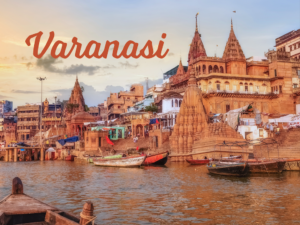40 Best Places of Visit in Varanasi: Famous Temples, Ghats & Heritage Spots
Introduction: Why Varanasi is Called the Spiritual Capital
Varanasi, also known as Kashi or Banaras, is one of the world’s oldest living cities. Nestled on the banks of the sacred Ganga, it’s a perfect blend of spirituality, culture, and history. From iconic ghats and temples to forts, museums, and Buddhist sites, there’s no shortage of incredible Varanasi visit places. Here’s your ultimate travel guide covering 40 famous places in Varanasi you must explore.
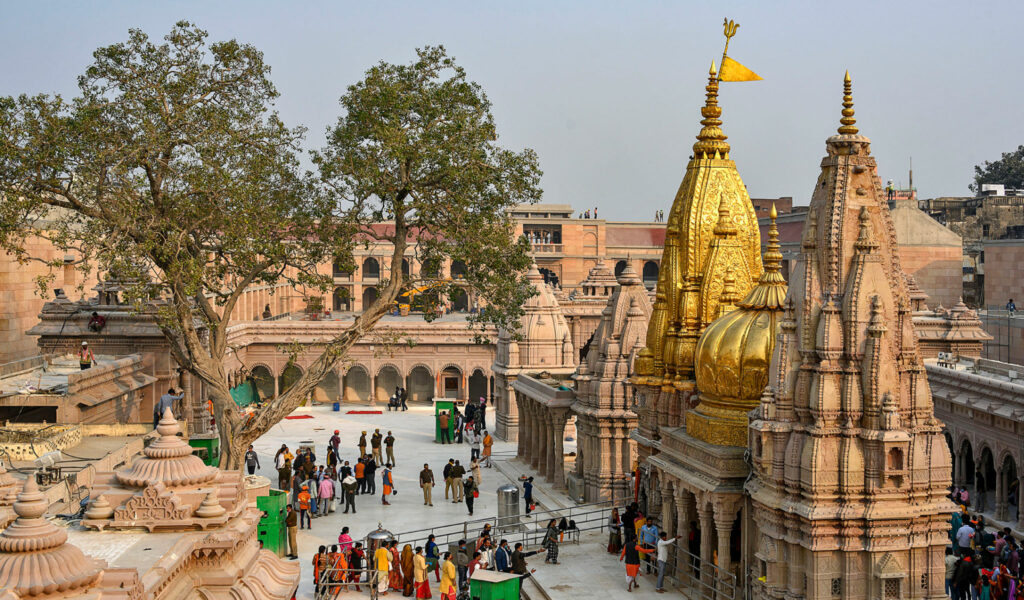
The Kashi Vishwanath Temple is the most famous of all places of visit in Varanasi and a crown jewel among Hindu pilgrimages. Dedicated to Lord Shiva, it is one of the twelve Jyotirlingas, making it a spiritually powerful site. The temple has been destroyed and rebuilt several times, with its current form dating back to 1780 under Rani Ahilyabai Holkar. The gold plating on the main dome gives it the popular name Golden Temple.
Every day, thousands of devotees and travelers come here to seek blessings, and the energy is truly unmatched. The recently developed Kashi Vishwanath Corridor connects the temple directly with the Ganga Ghats, making it easier for pilgrims to access the shrine after a holy dip.
•Timings: 3:00 AM – 11:00 PM (with special Mangala Aarti in early hours).
•Entry Fee: Free, though special darshan tickets cost around ₹300–₹500.
•Best Time to Visit: Early morning Mangala Aarti (3–4 AM) or evening Sandhya Aarti. Winter months (Oct–Feb) are pleasant.
•Travel Tip: Expect long queues; a tour guide in Varanasi can help with temple entry, rituals, and narrating its deep history. Carry minimal belongings as strict security checks are in place.
2. New Vishwanath Temple (BHU)
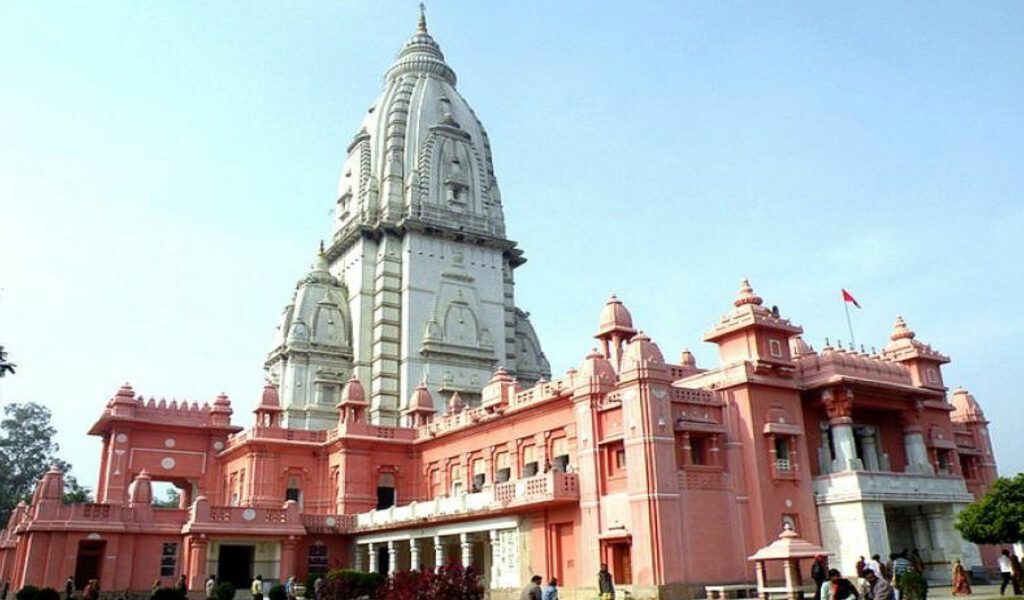
Located inside the sprawling Banaras Hindu University campus, the New Vishwanath Temple (also called Birla Mandir) is a modern replica of the old Kashi temple. Constructed in white marble, it has seven towering spires representing the seven chakras of human existence. Unlike the crowded old shrine, this temple offers a peaceful environment, making it ideal for meditation and quiet darshan.
It’s one of the famous places in Varanasi not only for its religious significance but also for its architectural beauty. The temple complex is spacious, welcoming both pilgrims and tourists who want to understand the spiritual culture of Varanasi without the heavy crowds.
•Timings: 4:00 AM – 12:00 PM, 1:00 PM – 9:00 PM.
•Entry Fee: Free.
•Best Time to Visit: Evenings when the campus is calm and beautifully lit.
•Travel Tip: Combine your visit with Bharat Kala Bhavan Museum nearby. Hiring a cycle rickshaw inside BHU is a good way to explore the massive campus.
3. Durga Kund Mandir
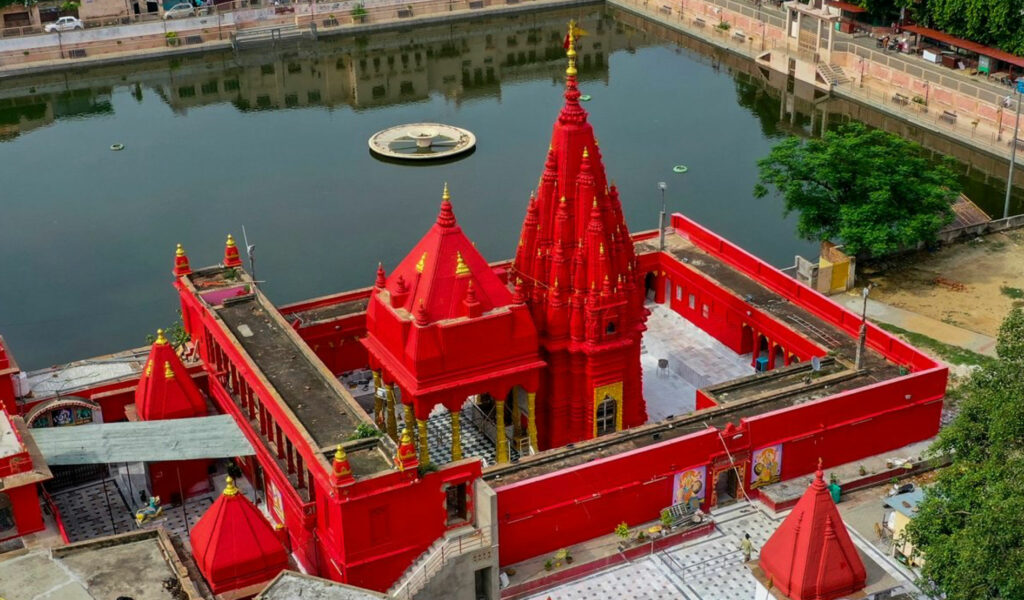
The Durga Kund Mandir is another must-see among Varanasi visit places. Built in the 18th century by Rani Bhabani of Bengal, this temple is dedicated to Goddess Durga, symbol of power and protection. Its bright red façade stands out, and the temple is built in North Indian Nagara style of architecture.
The temple is located next to a rectangular pond, called the Durga Kund, which is considered sacred. During Navratri and Durga Puja, the temple becomes a hub of devotion and festivity, attracting thousands of pilgrims and tourists.
•Timings: 5:00 AM – 11:00 PM.
•Entry Fee: Free.
•Best Time to Visit: Navratri festival (Sept–Oct) for grand celebrations.
•Travel Tip: Visit early in the morning for peaceful darshan. A tour guide in Varanasi can narrate mythological stories associated with Goddess Durga here.
4. Tulsi Manas Mandir
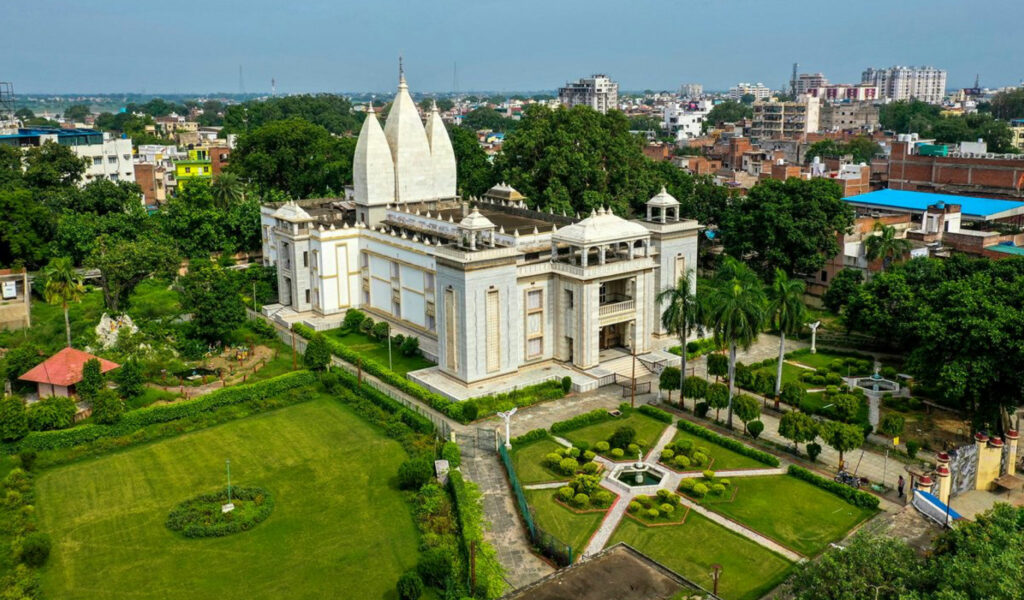
The Tulsi Manas Mandir is not just a temple but also a cultural landmark in Varanasi. It is where the great poet-saint Tulsidas composed the Ramcharitmanas in the Awadhi language, making Lord Rama’s story accessible to the common people.
The marble walls of the temple are beautifully engraved with verses from the epic, making it a unique attraction for literature and culture enthusiasts. It’s one of the famous places in Varanasi for those who want to explore the spiritual as well as literary heritage of the city.
•Timings: 5:30 AM – 12:00 PM, 3:30 PM – 9:00 PM.
•Entry Fee: Free.
•Best Time to Visit: Evenings, when devotional songs and bhajans are performed.
•Travel Tip: Carry a camera to capture the detailed inscriptions. A Varanasi tour guide can explain the meanings of the verses if you are new to Indian epics.
5. Annapurna Devi Mandir

Close to the Kashi Vishwanath Temple, the Annapurna Devi Mandir is dedicated to Goddess Annapurna, believed to be the goddess of food and nourishment. According to legends, Lord Shiva once argued with Goddess Parvati about the importance of material things. To prove her point, Parvati appeared as Annapurna Devi and showed that without food, even spiritual pursuits cannot exist.
This makes the temple one of the most famous places in Varanasi. Pilgrims believe that worshipping here ensures prosperity and that no devotee ever leaves the temple hungry. Special Annakut celebrations after Diwali are very popular.
•Timings: 4:00 AM – 11:00 PM.
•Entry Fee: Free.
•Best Time to Visit: During the Annakut festival in October–November.
•Travel Tip: Don’t miss the prasad (offering), as it’s considered a blessing of the goddess.
6. Sankat Mochan Hanuman Mandir
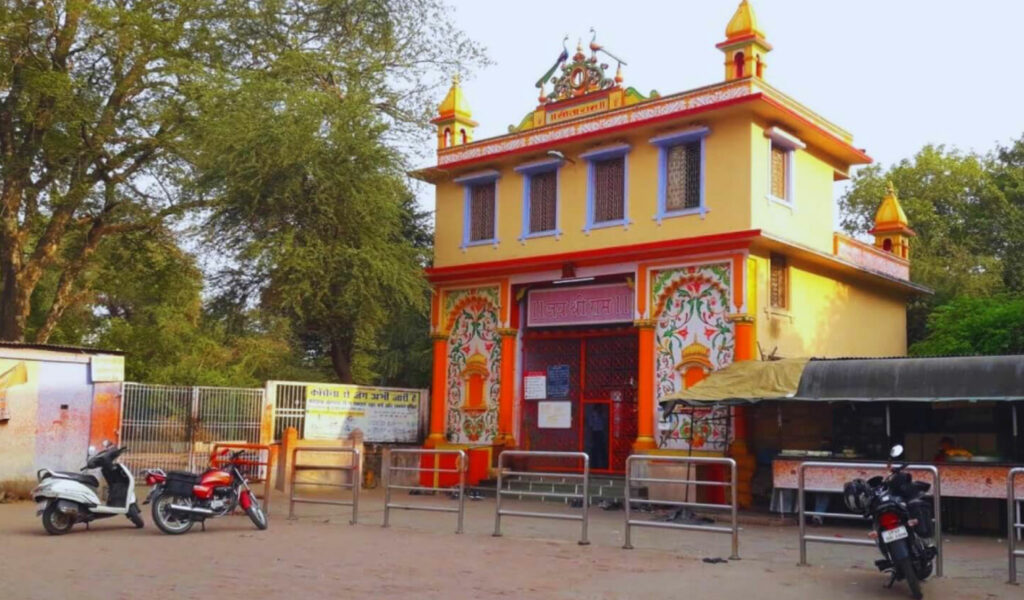
The Sankat Mochan Temple is one of the most visited Varanasi visit places and is dedicated to Lord Hanuman. Founded by the saint poet Tulsidas, the temple is believed to be built at the exact spot where he had a vision of Hanuman.
The temple is particularly crowded on Tuesdays and Saturdays, which are considered sacred for Hanuman worshippers. It’s famous for its special besan laddoos offered as prasad. The temple has a powerful and uplifting vibe, making it one of the most important places of visit in Varanasi.
•Timings: 5:00 AM – 10:00 PM.
•Entry Fee: Free.
•Best Time to Visit: Tuesday mornings to witness peak devotion.
•Travel Tip: Beware of monkeys around the temple—they may snatch food. A local guide can help you navigate the busy temple areas.
7. Bharat Mata Mandir
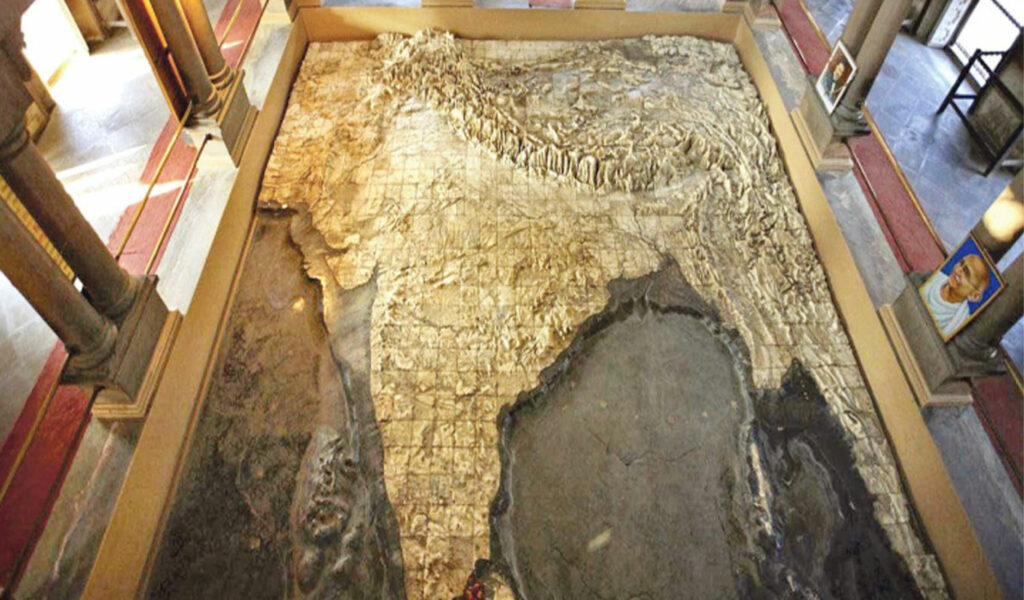
The Bharat Mata Mandir is unique because it doesn’t have idols of gods or goddesses. Instead, it houses a giant marble relief map of India. Inaugurated by Mahatma Gandhi in 1936, the temple represents the unity and cultural diversity of India.
This makes it one of the famous places in Varanasi for history lovers, students, and tourists who want to see a different side of Varanasi beyond spirituality. It is less crowded and ideal for spending time learning about India’s geography and freedom movement.
•Timings: 9:00 AM – 8:00 PM.
•Entry Fee: Free.
•Best Time to Visit: Mornings, when the place is quiet.
•Travel Tip: Hire a tour guide in Varanasi if you want to learn the history behind its construction and symbolism.
8. Mrityunjay Mahadev Mandir
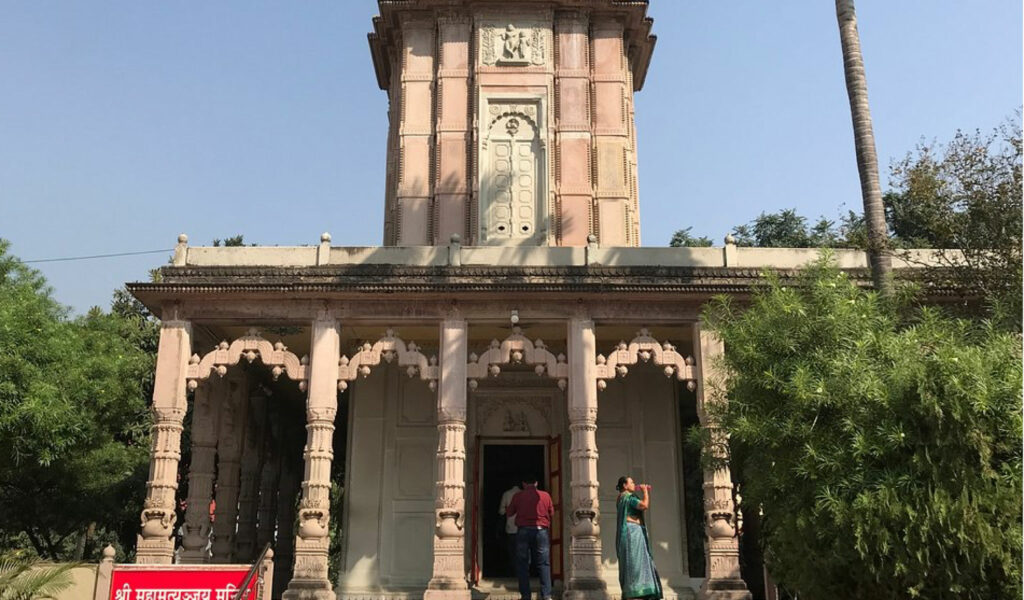
The Mrityunjay Mahadev Mandir is one of the most powerful spiritual places of visit in Varanasi. Dedicated to Lord Shiva in his form as the “Conqueror of Death,” devotees believe worshipping here protects them from illness, untimely death, and misfortune. The presiding deity is associated with the Mahamrityunjaya Mantra, a sacred chant for healing and longevity.
The temple complex also features a sacred well, known as the Mrityunjay Kund. Locals believe its water carries medicinal properties, as it has been sanctified through centuries of rituals and offerings. Pilgrims from across India come here to perform special pujas for health, prosperity, and peace.
•Timings: 4:00 AM – 12:00 PM, 2:00 PM – 9:00 PM.
•Entry Fee: Free.
•Best Time to Visit: Mondays (considered auspicious for Lord Shiva). The month of Shravan (July–August) sees grand celebrations.
•Travel Tip: Participate in the evening aarti for an uplifting experience. A tour guide in Varanasi can help arrange special puja rituals.
9. Kal Bhairav Mandir
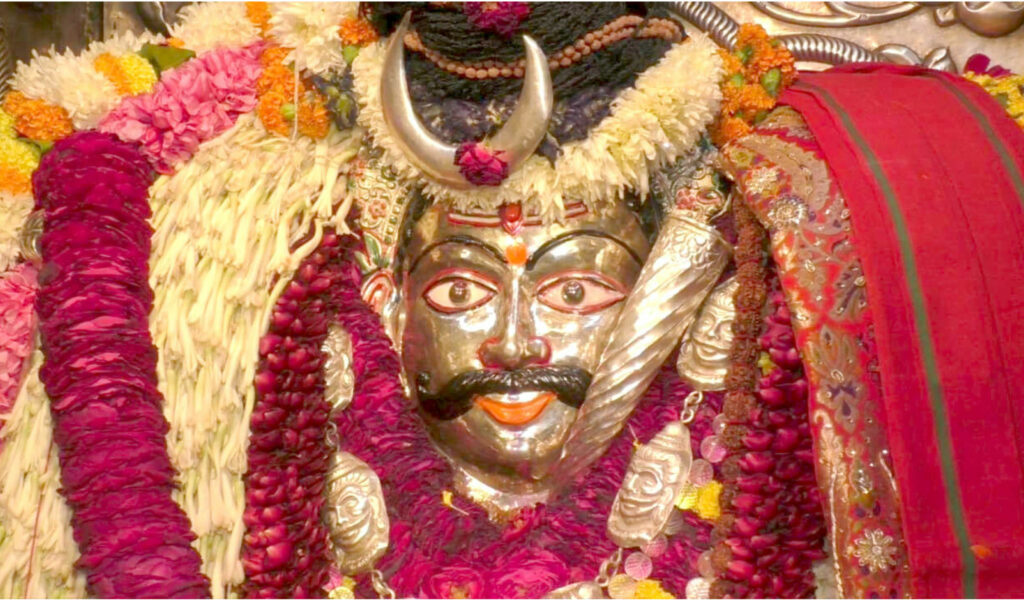
The Kal Bhairav Mandir is one of the most ancient and revered famous places in Varanasi. Kal Bhairav, a fierce manifestation of Lord Shiva, is considered the guardian deity of Kashi (Varanasi). Tradition says that no pilgrimage to Varanasi is complete without visiting this temple, as Bhairav Nath is the city’s protector.
The idol of Kal Bhairav is adorned with garlands, and devotees often offer black cloth, alcohol, or oil as part of rituals—unique practices that distinguish this temple from others. Local belief holds that Bhairav protects devotees from evil forces and grants them strength.
This makes it one of the most significant Varanasi visit places for spiritual seekers who wish to experience the deeper, mystical traditions of Hinduism.
•Timings: 5:00 AM – 1:30 PM, 4:30 PM – 9:30 PM.
•Entry Fee: Free.
•Best Time to Visit: Early mornings or during the festival of Kal Bhairav Ashtami (November–December).
•Travel Tip: The temple is located in a narrow lane; wear comfortable shoes. Go with a tour guide in Varanasi who can explain the powerful legends of Kal Bhairav.
10. Ratneshwar Mahadev Temple (Leaning Temple)
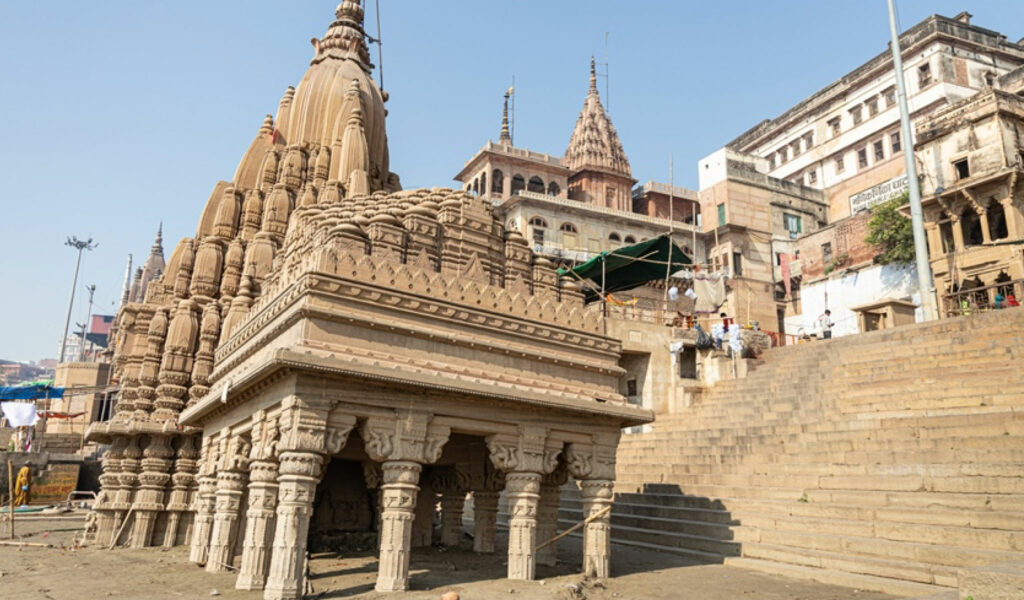
The Ratneshwar Mahadev Temple, famously known as the Leaning Temple of Varanasi, is one of the most photographed sites in the city. Situated near Manikarnika Ghat, this Shiva temple leans dramatically at an angle of about 9 degrees, making it an architectural curiosity and one of the most unusual places of visit in Varanasi.
Legends claim it was built by a servant of Raja Man Singh in the 17th century, though others believe it was commissioned by Queen Ratna Bai. The temple is partially submerged during monsoon months when the Ganga rises, adding to its mysterious charm.
While active worship here is limited due to flooding, the temple remains a visual marvel for tourists, historians, and photographers alike. Its tilted structure, set against the backdrop of the Ganga, makes it one of the famous places in Varanasi on every traveler’s list.
•Timings: Accessible all day, though not always safe during peak monsoon.
•Entry Fee: Free.
•Best Time to Visit: October–March, when the river level is low and the temple is fully visible.
•Travel Tip: The best view is from a boat ride on the Ganga. A Varanasi tour guide can share fascinating myths about its construction and tilt.
✨ Tip: A tour guide in Varanasi can help you explore hidden temples often missed by tourists.
11. Dashashwamedh Ghat
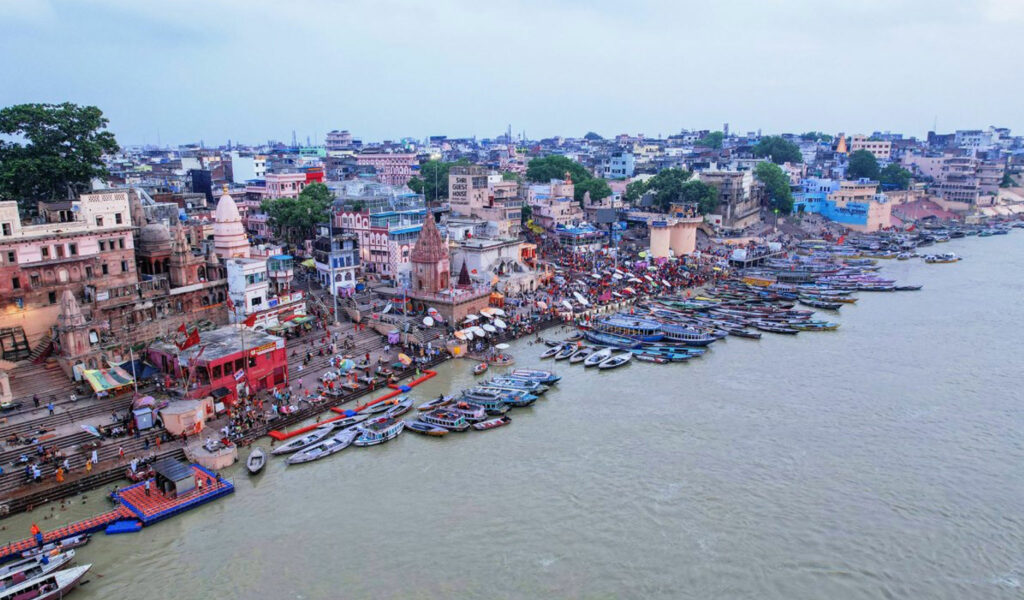
The Dashashwamedh Ghat is the liveliest and most famous of all ghats in Varanasi. According to legends, Lord Brahma performed the Dashashwamedh Yajna (sacrifice of 10 horses) here, hence the name. Today, it’s known worldwide for the grand Ganga Aarti performed every evening with lamps, chants, and rhythmic bells that leave visitors spellbound.
Pilgrims come to take a holy dip here, believing it cleanses sins. For tourists, the sight of colorful boats, priests performing rituals, and the bustling atmosphere make it one of the top Varanasi visit places.
•Timings: Open 24 hours, but Ganga Aarti takes place daily around 6:30 PM (summer) and 7:00 PM (winter).
•Entry Fee: Free (VIP seating ₹500–₹1000).
•Best Time to Visit: Sunset for Ganga Aarti or sunrise for calm boat rides.
•Travel Tip: Arrive at least 1 hour early for the evening Aarti to get a good spot. A tour guide in Varanasi can reserve VIP seats and explain the rituals.
12. Assi Ghat
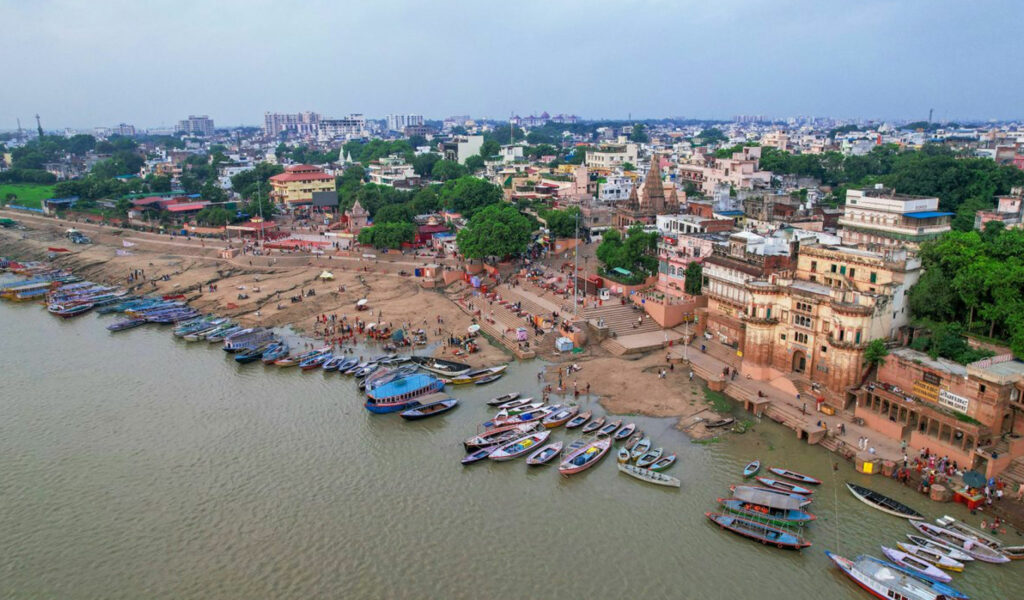
Located at the confluence of River Ganga and Assi, Assi Ghat is one of the most spiritual and youthful places of visit in Varanasi. It is said that Goddess Durga threw her sword into the river Assi here after killing demons Shumbha-Nishumbha.
Today, Assi Ghat is popular for sunrise yoga sessions, live music, cultural festivals, and boat rides. Unlike Dashashwamedh, it has a relaxed vibe with many cafes nearby, making it a favorite among students and international travelers.
•Timings: Open 24 hours, but morning aarti happens at sunrise (5:00–6:00 AM).
•Entry Fee: Free.
•Best Time to Visit: Early morning for yoga & sunrise; evenings for music programs.
•Travel Tip: Join the “Subah-e-Banaras” program (yoga + devotional music). A local guide can arrange bookings.
13. Manikarnika Ghat
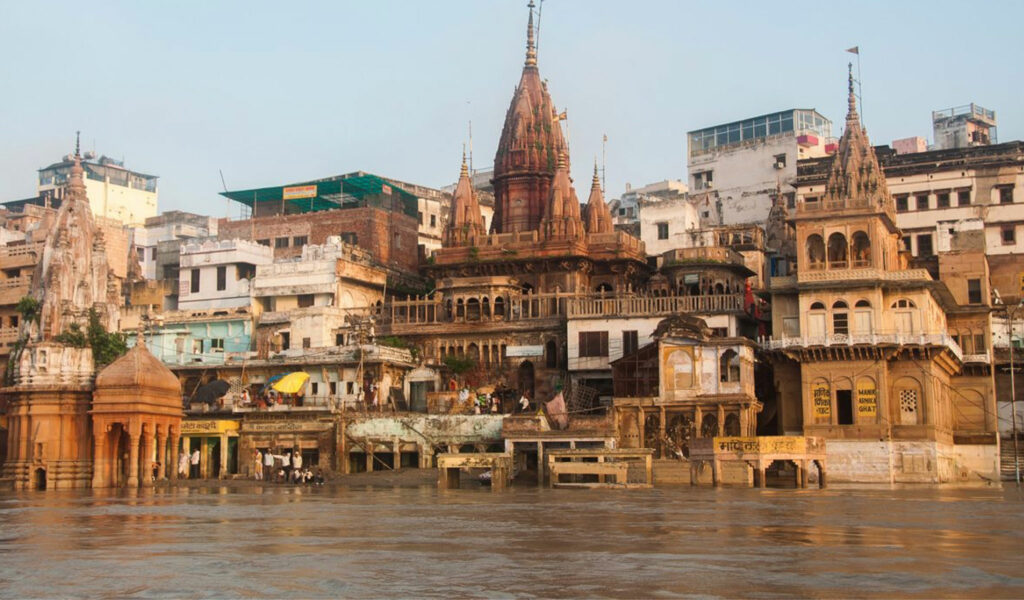
Known as the most sacred cremation ghat, Manikarnika Ghat represents the eternal cycle of life and death. Hindus believe that dying or being cremated here leads to liberation (moksha). Unlike other tourist spots, it is not a place of entertainment but of deep spiritual significance.
Though intense, it’s an important stop among famous places in Varanasi. The sight of continuous cremation pyres may be overwhelming for some, but it offers a raw and powerful insight into Hindu beliefs. Photography is not allowed out of respect.
•Timings: Open 24 hours; cremations happen day and night.
•Entry Fee: Free.
•Best Time to Visit: Anytime, though evenings offer a unique atmosphere.
•Travel Tip: If visiting, go with a tour guide in Varanasi who can respectfully explain rituals. Avoid disturbing families or taking photos.
14. Harishchandra Ghat
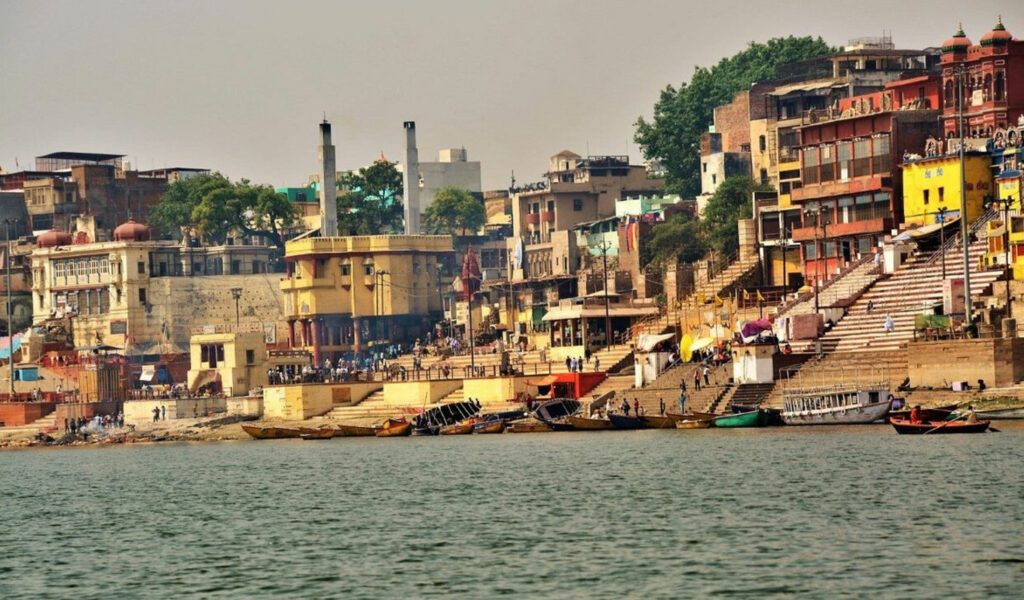
This is another cremation ghat, second only to Manikarnika in importance. Named after King Harishchandra, known for his truthfulness and sacrifice, it holds a powerful place in Hindu mythology.
It may not be as crowded as Manikarnika, making it more approachable for those curious about Varanasi’s funeral traditions. The eternal flame that burns here has been alight for centuries.
•Timings: Open all day, cremations happen continuously.
•Entry Fee: Free.
•Best Time to Visit: Daytime when rituals are visible.
•Travel Tip: Respect privacy. A tour guide can share stories of King Harishchandra and his legendary truthfulness.
15. Panchganga Ghat
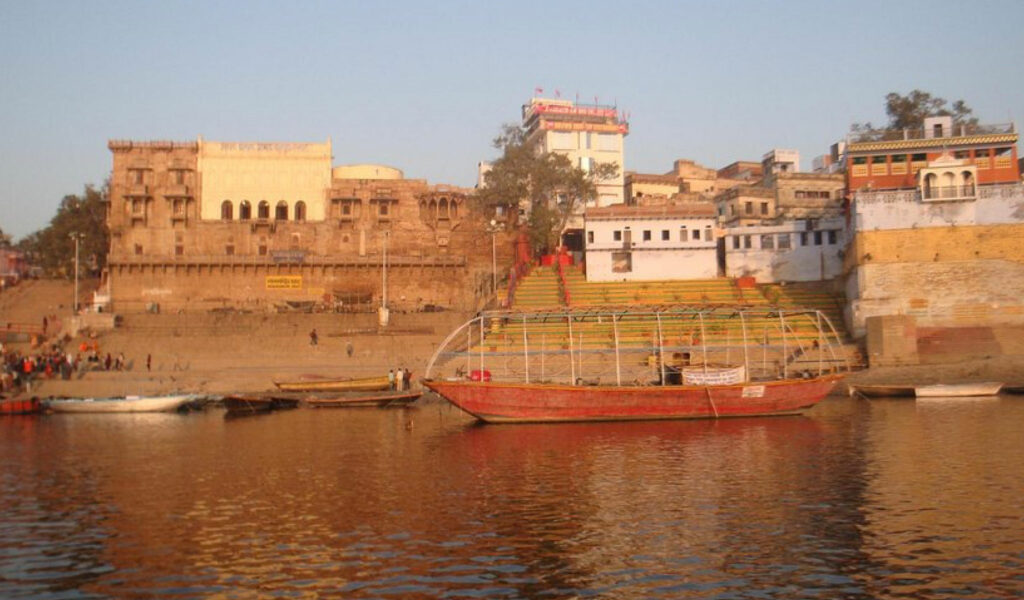
As the name suggests, Panchganga Ghat is believed to be the confluence of five rivers—Ganga, Yamuna, Saraswati, Dhupapapa, and Kirana. It has deep religious significance, with ancient temples dotting the steps. Saint Tulsidas is said to have lived and composed part of Vinay Patrika here.
Though less crowded than Dashashwamedh, it retains an aura of peace and spirituality. It is among the Varanasi visit places for those who love quiet reflection.
•Timings: Open 24 hours.
•Entry Fee: Free.
•Best Time to Visit: Early mornings or late evenings for serenity.
•Travel Tip: Ideal spot to meditate or sketch. Tour guides often bring travelers here for offbeat experiences.
16. Raja Ghat
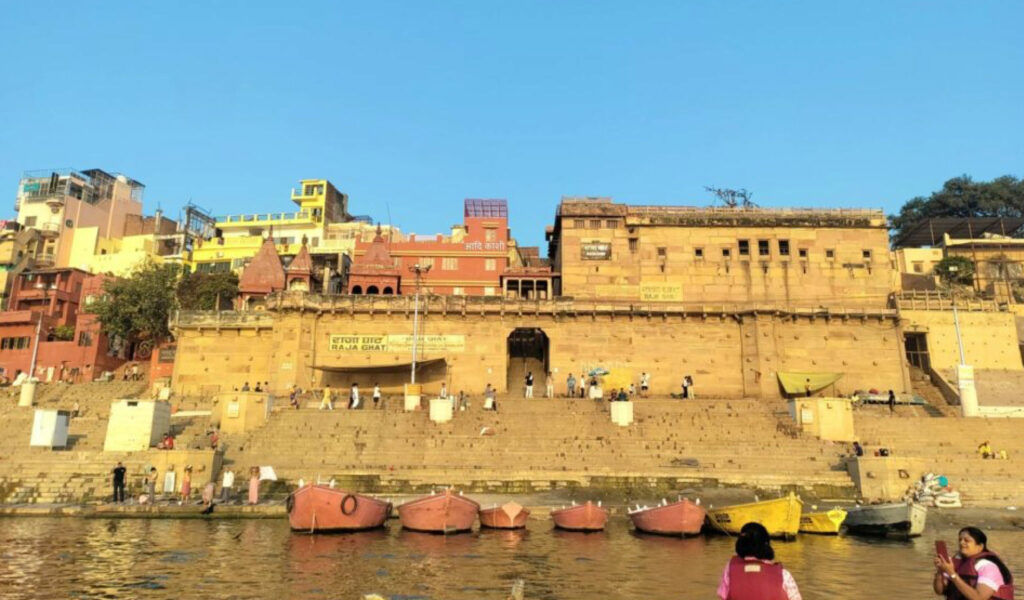
Raja Ghat is an architectural beauty among the ghats. Built by King Raj Singh of Jaipur, it features elegant stone steps and palatial structures. It’s quieter than the main ghats and ideal for photography enthusiasts.
Though not as religiously significant as Manikarnika or Dashashwamedh, Raja Ghat still ranks among famous places in Varanasi for its royal feel and less-crowded ambiance.
•Timings: Open 24 hours.
•Entry Fee: Free.
•Best Time to Visit: Sunrise, when the palace and ghat are bathed in golden light.
•Travel Tip: Take a boat ride at dawn for perfect photos.
17. Scindia Ghat
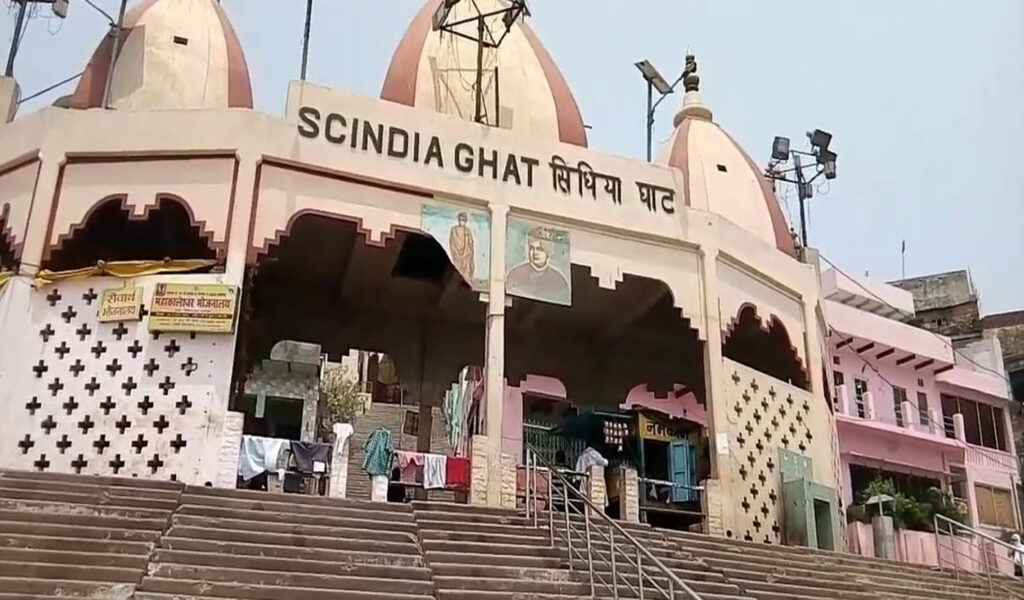
One of the most photogenic ghats, Scindia Ghat is famous for its partially submerged Shiva temple, which leans dramatically into the Ganga. According to legend, the temple sank due to its heavy weight.
It’s a quiet place compared to the main ghats, making it popular for travelers seeking peace. The ghat also leads to narrow lanes filled with shrines and hidden temples, perfect for exploring with a tour guide in Varanasi.
•Timings: Open all day.
•Entry Fee: Free.
•Best Time to Visit: Morning hours for photography or evenings for peace.
•Travel Tip: Carry good walking shoes; the nearby lanes are narrow but full of surprises.
18. Tulsi Ghat

Tulsi Ghat, named after the saint poet Tulsidas, is one of the most culturally significant ghats. It is believed Tulsidas lived here and composed parts of the Ramcharitmanas. The ghat is also associated with the preparation of the Ayurvedic oil “Tulsi Malam,” used to cure leprosy.
Every year during Nag Nathaiya festival, the ghat becomes lively with enactments of Lord Krishna’s childhood stories. It is one of the famous places in Varanasi for culture enthusiasts.
•Timings: Open 24 hours.
•Entry Fee: Free.
•Best Time to Visit: November, during the Nag Nathaiya festival.
•Travel Tip: A Varanasi tour guide can share folk stories about Tulsidas and the traditions of this ghat.
19. Chet Singh Ghat
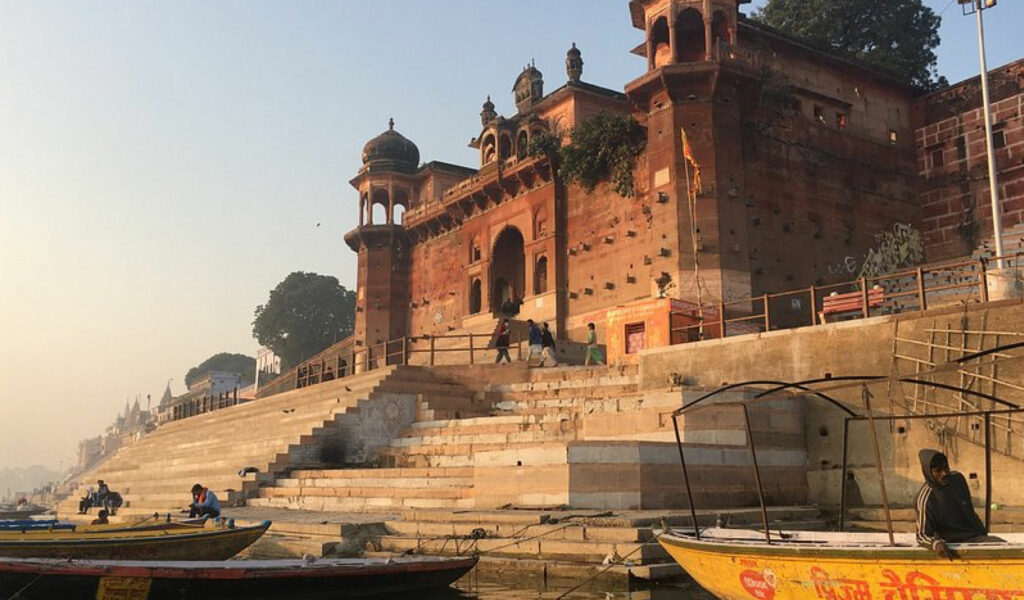
The Chet Singh Ghat stands out among the many ghats of Varanasi because of its fort-like architecture and Mughal-era history. Built in the 18th century, it was once the stronghold of Maharaja Chet Singh, who resisted British colonial power. In 1781, a major battle was fought here between Chet Singh and Warren Hastings, the first Governor-General of India. Though the Maharaja eventually lost, the fort remains a symbol of courage and resistance.
Today, the ghat is quieter compared to Dashashwamedh or Assi, making it one of the lesser-known but fascinating places of visit in Varanasi. Its massive stone walls and red-brick fort give it a medieval charm. Travelers often come here for photography, heritage walks, and peaceful views of the Ganga.
•Timings: Open all day.
•Entry Fee: Free.
•Best Time to Visit: Early morning for calmness, or sunset for stunning views of the fort walls glowing in golden light.
•Travel Tip: Combine this visit with nearby ghats like Shivala Ghat. A tour guide in Varanasi can narrate the battle of 1781, adding historical depth to your experience.
20. Darbhanga Ghat
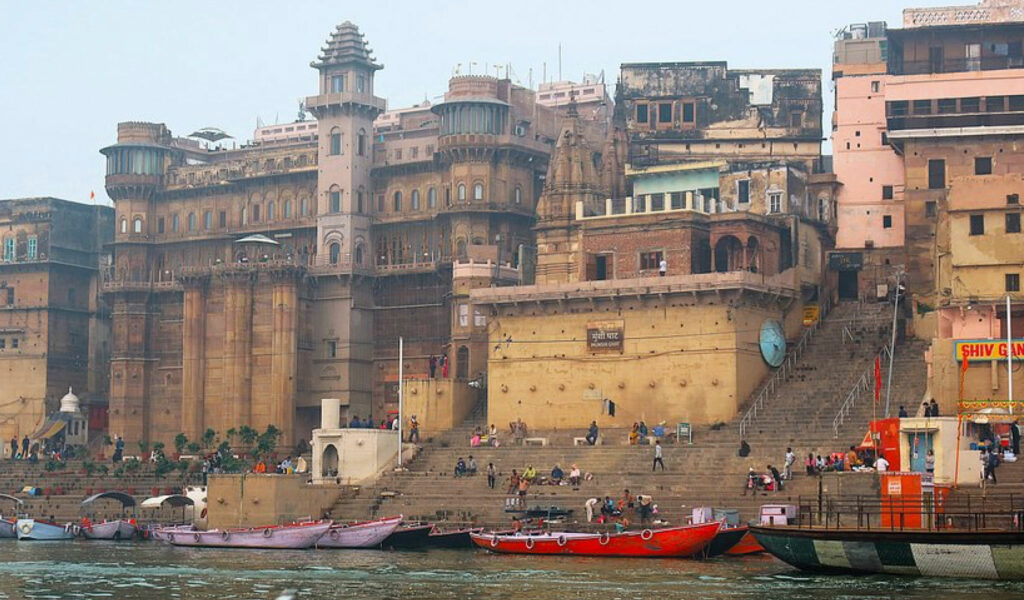
One of the most photogenic and royal ghats in Varanasi, the Darbhanga Ghat is famous for its magnificent palace built by the Darbhanga royal family of Bihar in the early 20th century. The palace, constructed in sandstone, features elegant balconies, carved pillars, and grand staircases leading directly into the Ganga.
This ghat is a favorite for travelers seeking Instagram-worthy pictures and architectural enthusiasts who admire its regal vibe. In fact, many consider it one of the famous places in Varanasi because it blends heritage with scenic beauty. Today, the palace has been partly converted into a luxury hotel, giving guests a chance to experience royal living on the banks of the Ganga.
•Timings: Open all day (hotel access restricted).
•Entry Fee: Free for the ghat; staying at the hotel involves premium charges.
•Best Time to Visit: Sunrise, when the palace reflects on the river; winter months (Nov–Feb) for clear skies.
•Travel Tip: Best viewed during a boat ride on the Ganga. Hire a Varanasi tour guide who can help you explore stories of the Darbhanga family and their contribution to the city.
21. Kedar Ghat
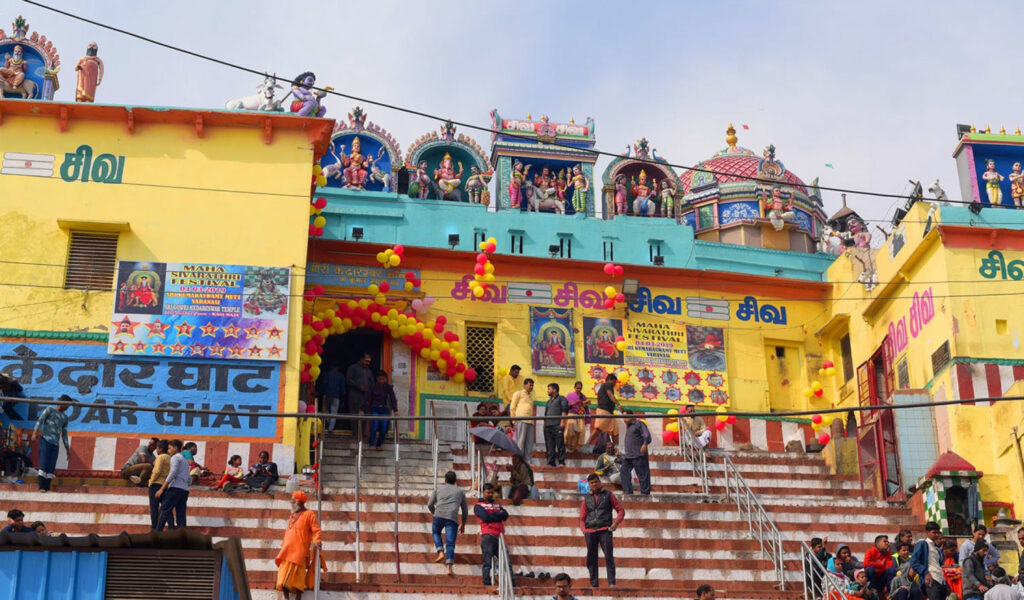
Kedar Ghat is one of the most sacred Varanasi visit places, especially for South Indian pilgrims. It is home to the colorful Kedareshwar Temple, dedicated to Lord Shiva, built in traditional South Indian style. The temple is considered a counterpart of the Kedarnath Temple in Uttarakhand, and locals believe that visiting Kedareshwar here grants similar blessings.
The ghat itself is beautifully painted in red and white stripes, reminiscent of temples in Tamil Nadu. Pilgrims throng here for ritual baths, as the water is believed to be especially holy. During festivals like Shravan month and Shivratri, the ghat becomes vibrant with rituals, bhajans, and devotional energy.
•Timings: Open 24 hours; temple timings are 4:00 AM – 12:00 PM, 4:00 PM – 9:00 PM.
•Entry Fee: Free.
•Best Time to Visit: Mornings for peaceful rituals; Shivratri festival for cultural vibrancy.
•Travel Tip: The steps can be slippery during monsoon—wear comfortable shoes. A tour guide in Varanasi can explain temple traditions and arrange a South Indian-style puja here.
22. Ramnagar Fort
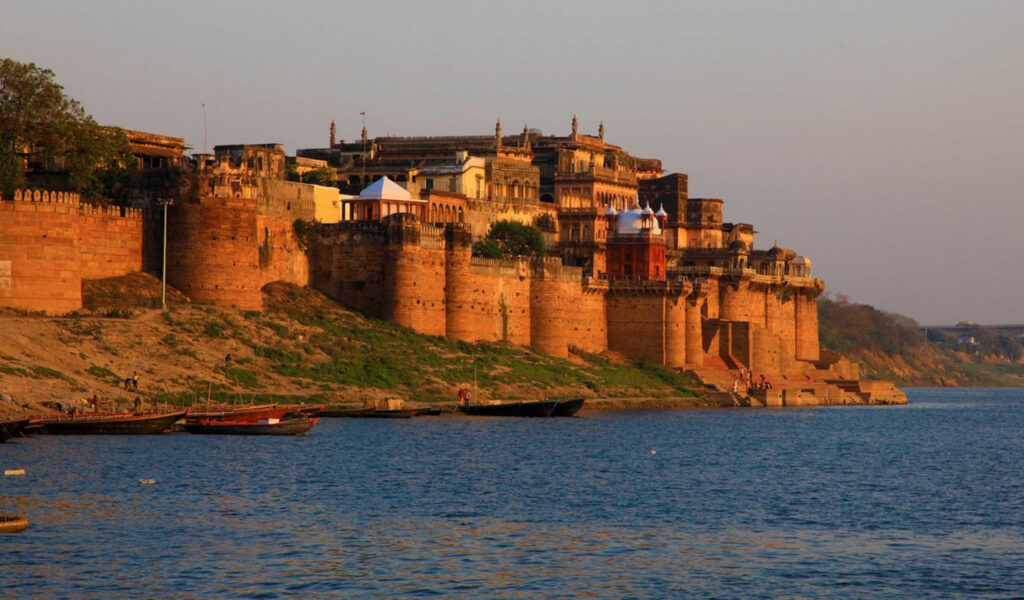
The Ramnagar Fort, located across the Ganga on the eastern bank, is one of the most iconic historical places of visit in Varanasi. Built in the 18th century by Raja Balwant Singh, it was the residence of the Maharaja of Banaras and still houses the royal family. The fort is an architectural blend of Mughal and Indian styles, with sandstone walls and intricately carved balconies.
Inside the fort lies a museum showcasing royal artifacts, vintage cars, medieval costumes, weapons, and antique manuscripts. The Durbar Hall, with its grand chandeliers and throne, offers a glimpse into regal life. The fort also hosts the grand Ramnagar Ramlila festival, a month-long dramatization of the Ramayana.
•Timings: 10:00 AM – 5:00 PM (closed on Holi and other major festivals).
•Entry Fee: ₹20–₹50 for Indians, ₹150 for foreigners.
•Best Time to Visit: October–March for pleasant weather; evenings for scenic views of the Ganga.
•Travel Tip: Reach via boat ride from Dashashwamedh Ghat for the best experience. A tour guide in Varanasi can explain the stories behind artifacts and fort traditions.
23. Bharat Kala Bhavan (BHU)

Located inside Banaras Hindu University, Bharat Kala Bhavan is one of India’s most reputed museums and an unmissable stop among famous places in Varanasi. Established in 1920, it houses over 1,00,000 artifacts, including paintings, sculptures, textiles, coins, jewelry, and archaeological finds.
Highlights include Mughal and miniature paintings, terracotta figurines, Buddhist sculptures, and cultural objects from across India. The museum is particularly useful for those interested in art, history, and culture.
•Timings: 10:30 AM – 4:30 PM (closed on Sundays and public holidays).
•Entry Fee: ₹20 for Indians, ₹150 for foreigners.
•Best Time to Visit: Weekdays, mornings are less crowded.
•Travel Tip: Combine with a visit to the New Vishwanath Temple inside BHU. Guides are available for detailed explanations.
24. Jantar Mantar (Man Mahal Observatory)
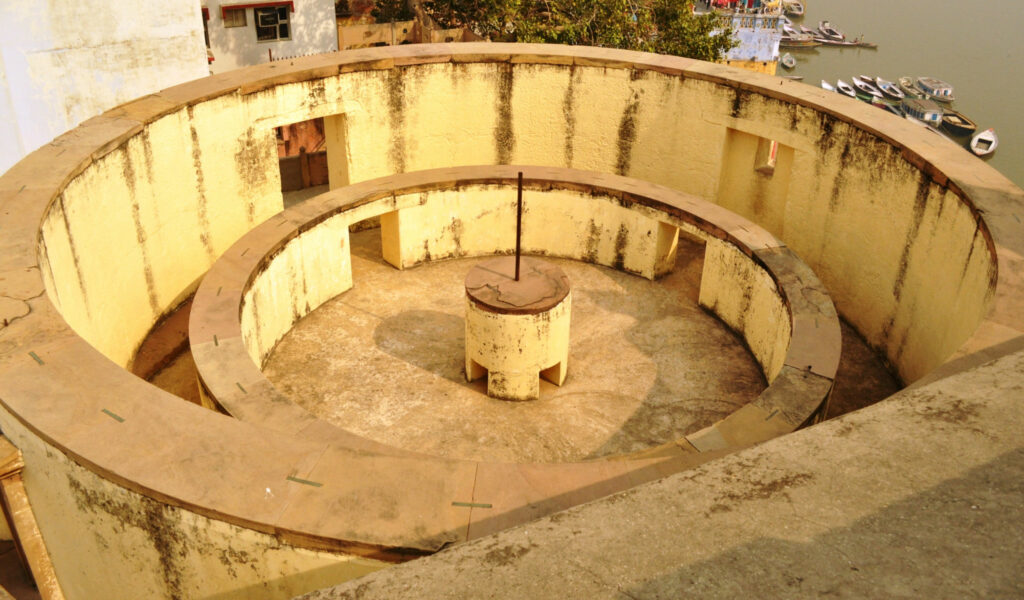
Varanasi also boasts a Jantar Mantar, similar to the ones in Jaipur and Delhi. Built in 1737 by Maharaja Jai Singh II, it was designed for astronomical observations. Located near Dashashwamedh Ghat, the observatory includes instruments like the Samrat Yantra (sun dial) and Chakra Yantra (for solar and lunar positions).
Though some instruments are now in ruins, it remains one of the lesser-known but unique Varanasi visit places, blending science and history.
•Timings: 6:00 AM – 5:00 PM.
•Entry Fee: ₹15 for Indians, ₹100 for foreigners.
•Best Time to Visit: Morning hours for photography and exploration.
•Travel Tip: A tour guide in Varanasi can demonstrate how the instruments were once used to study stars and planets.
25. Man Mahal
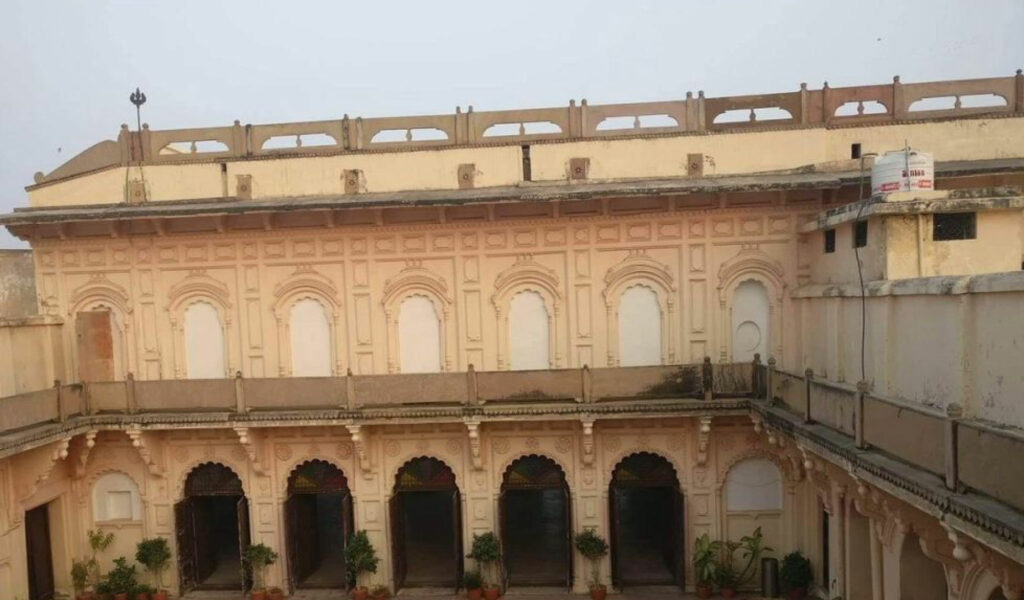
Built by Raja Man Singh of Amber in the early 17th century, Man Mahal is the largest palace in Varanasi. Overlooking Dashashwamedh Ghat, it was originally a royal residence but now houses the Jantar Mantar observatory. The palace features Mughal-style courtyards, carved balconies, and panoramic views of the Ganga.
It is among the famous places in Varanasi for history enthusiasts as well as photographers. The palace has been partially converted into a heritage hotel, giving visitors a chance to experience royal hospitality.
•Timings: 6:00 AM – 5:00 PM.
•Entry Fee: Included in Jantar Mantar ticket.
•Best Time to Visit: Sunset for spectacular views of the river.
•Travel Tip: Enjoy tea at nearby rooftop cafes overlooking the palace and ghats.
26. Alamgir Mosque
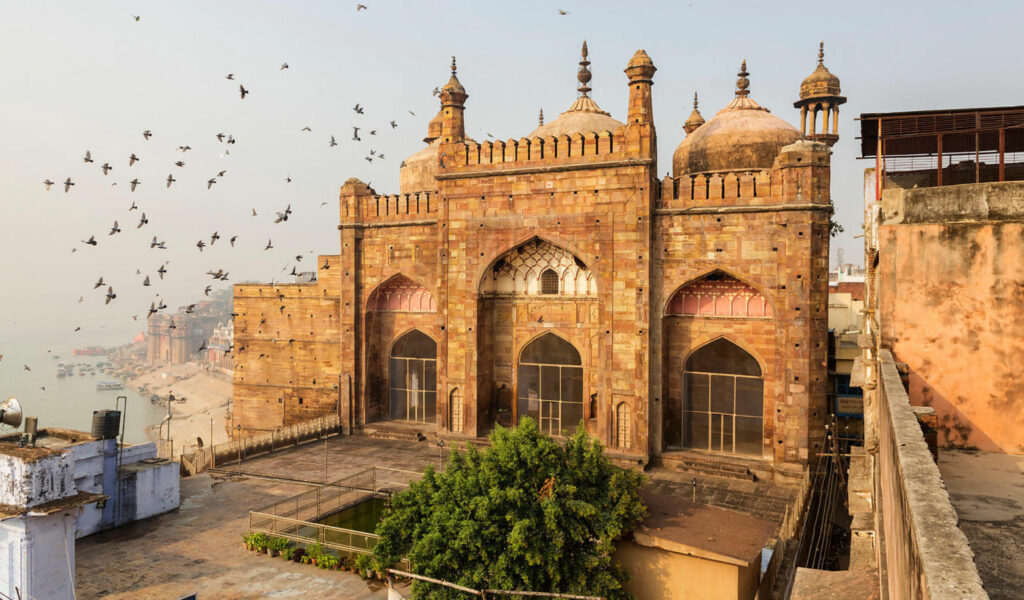
The Alamgir Mosque, also known as Beni Madhav Ka Darera, was built by Mughal emperor Aurangzeb in the 17th century. Situated above Panchganga Ghat, it reflects a mix of Mughal and Hindu architecture.
Though controversial due to its history of replacing a Hindu temple, today it serves as a peaceful mosque and a fine example of Indo-Islamic architecture. The mosque offers breathtaking views of the Ganga and remains one of the Varanasi visit places that blend multiple cultures.
•Timings: Sunrise to sunset.
•Entry Fee: Free.
•Best Time to Visit: Early morning for tranquility and photography.
•Travel Tip: Non-Muslims may not be allowed inside during prayers, so plan accordingly.
27. Nepali Temple (Kathwala Temple)
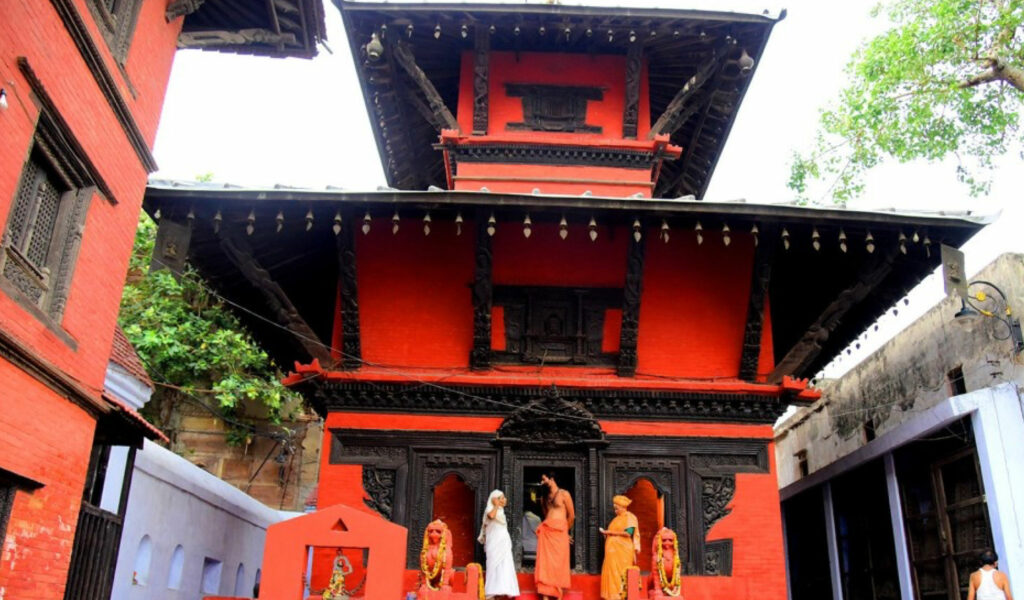
Often called the “Mini Khajuraho of Varanasi,” the Nepali Temple near Lalita Ghat is a hidden gem. Built in the 19th century by the King of Nepal, it is dedicated to Lord Shiva and constructed entirely in wood with intricate carvings.
The architecture resembles Nepal’s Pashupatinath Temple, making it one of the most unique places of visit in Varanasi. Its peaceful riverside location makes it a favorite for those seeking solitude.
•Timings: 6:00 AM – 7:00 PM.
•Entry Fee: Free.
•Best Time to Visit: Mornings and evenings for calm surroundings.
•Travel Tip: Don’t miss the detailed wooden carvings, which are rare in Indian temples.
28. Sarnath
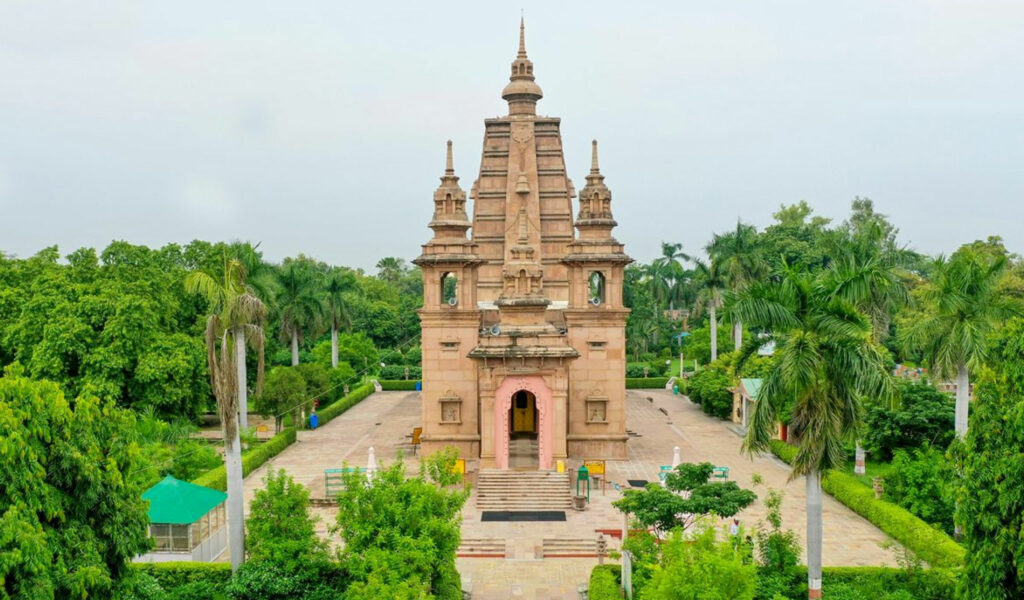
Just 10 km from Varanasi lies Sarnath, one of the most famous Buddhist pilgrimage sites in the world. It was here that Lord Buddha delivered his first sermon after attaining enlightenment, known as the “Dharmachakra Pravartana” or turning of the wheel of Dharma. This makes Sarnath one of the most spiritually significant places of visit in Varanasi.
The complex includes stupas, monasteries, temples, and a museum. It attracts pilgrims from across Asia, especially from Japan, Thailand, and Sri Lanka. The peaceful gardens and historical ruins make Sarnath a must-visit for history lovers and spiritual seekers alike.
•Timings: 6:00 AM – 6:00 PM.
•Entry Fee: Free for the main ruins; museum entry ₹25 (Indians), ₹300 (foreigners).
•Best Time to Visit: November–March for pleasant weather.
•Travel Tip: Hire a tour guide in Varanasi to understand Buddhist symbolism and stories behind each monument.
29. Dhamek Stupa
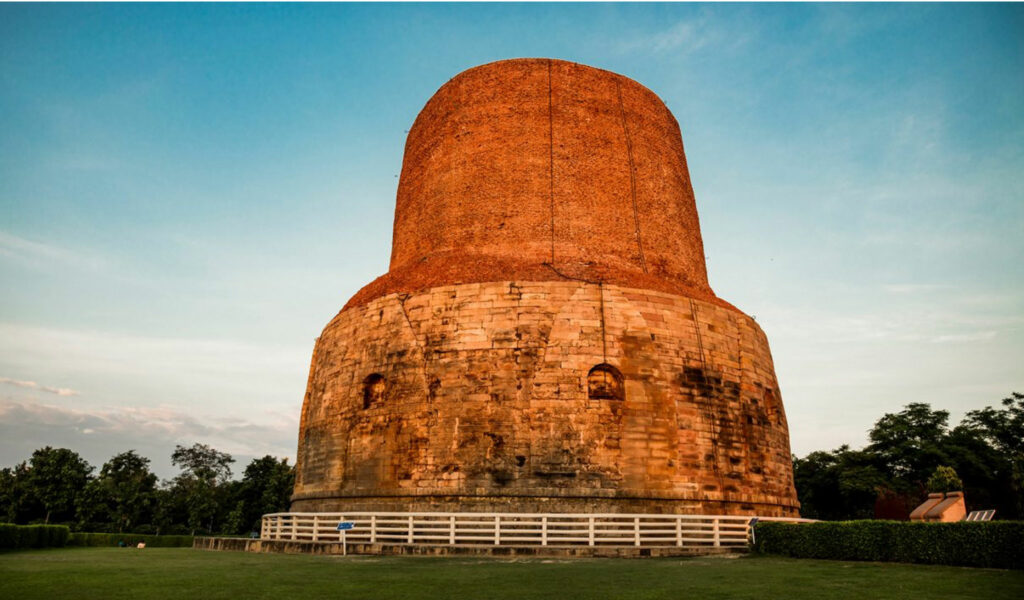
The Dhamek Stupa is the most prominent structure in Sarnath. Built in 249 BCE by Emperor Ashoka and later expanded, it marks the exact spot where Buddha gave his first sermon. The cylindrical stupa stands 43 meters high and 28 meters wide, with intricate floral carvings on its lower half.
Standing before this massive structure, one can sense the spiritual gravity that has attracted seekers for centuries. It’s one of the famous places in Varanasi for Buddhist devotees.
•Timings: 6:00 AM – 5:00 PM.
•Entry Fee: Included in Sarnath archaeological site ticket.
•Best Time to Visit: Morning for meditation in a quieter environment.
•Travel Tip: Sit under the trees around the stupa—it’s a serene spot for reflection.
30. Chaukhandi Stupa
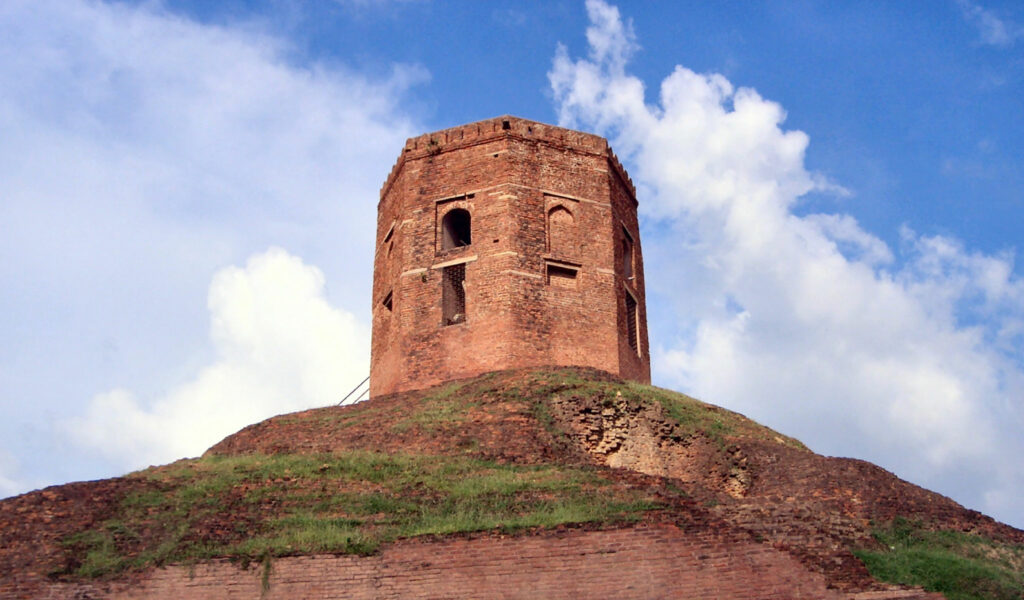
The Chaukhandi Stupa is another important monument in Sarnath. It marks the place where Lord Buddha first met his five disciples after enlightenment. Originally built as a terraced temple in the 5th century, it was later crowned with a Mughal-style octagonal tower.
Its historical layers make it one of the most fascinating Varanasi visit places for both Buddhists and historians. The elevated site also offers panoramic views of Sarnath’s greenery.
•Timings: 10:00 AM – 5:00 PM.
•Entry Fee: ₹25 (Indians), ₹300 (foreigners).
•Best Time to Visit: Sunset, when the monument glows in golden light.
•Travel Tip: Pair this visit with Dhamek Stupa as they are close by.
31. Mulagandha Kuti Vihar
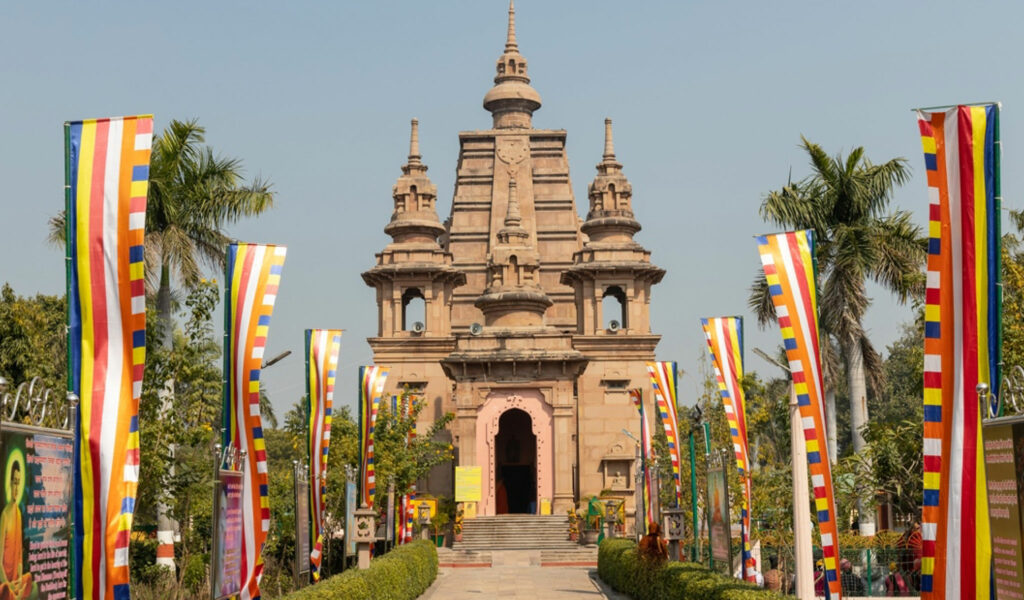
Built in 1931 by the Maha Bodhi Society, the Mulagandha Kuti Vihar is a modern Buddhist temple at Sarnath. It houses beautiful frescoes and murals depicting the life of Buddha, painted by Japanese artist Kosetsu Nosu. The temple also has a relic of the Buddha, making it a sacred site.
The adjoining garden features a Bodhi tree grown from a sapling of the original Bodhi tree at Bodh Gaya, adding immense spiritual value.
•Timings: 4:00 AM – 9:00 PM.
•Entry Fee: Free.
•Best Time to Visit: Morning chanting sessions create a magical atmosphere.
•Travel Tip: Attend the evening prayer session for a deeply calming experience.
32. Sarnath Museum
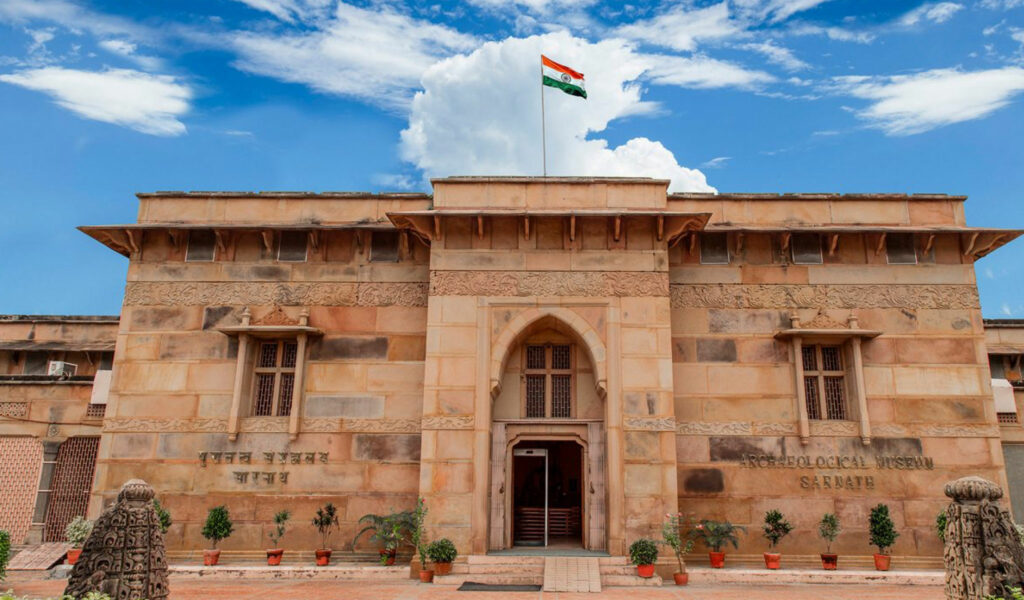
The Sarnath Archaeological Museum is the oldest site museum of the Archaeological Survey of India, established in 1910. It houses nearly 7,000 artifacts found at Sarnath, including the famous Lion Capital of Ashoka, which is India’s national emblem.
The galleries display sculptures of Buddha and Bodhisattvas, inscriptions, and ancient coins. It’s one of the famous places in Varanasi for art and history lovers.
•Timings: 9:00 AM – 5:00 PM (closed on Fridays).
•Entry Fee: ₹20 (Indians), ₹250 (foreigners).
•Best Time to Visit: Mornings for a quieter experience.
•Travel Tip: Photography is restricted inside, so focus on observing details.
33. Ashoka Pillar
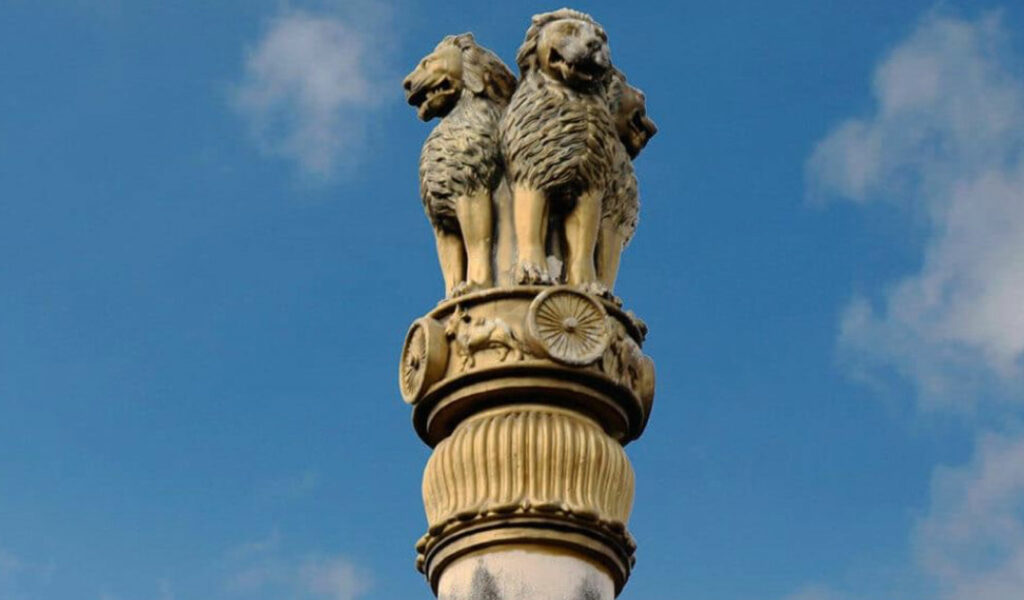
The Ashoka Pillar at Sarnath is one of Emperor Ashoka’s original stone pillars, inscribed with edicts promoting Dharma and non-violence. Although the pillar is broken, the Lion Capital, now in the museum, remains India’s national symbol.
Standing near the ruins of the pillar makes one feel connected to India’s ancient heritage, making it an essential stop among Varanasi visit places.
•Timings: Same as Sarnath ruins (6:00 AM – 6:00 PM).
•Entry Fee: Included in Sarnath archaeological site ticket.
•Best Time to Visit: Morning or late afternoon.
•Travel Tip: Read the English translations of Ashoka’s edicts before visiting—it deepens the experience.
34. Thai Temple at Sarnath
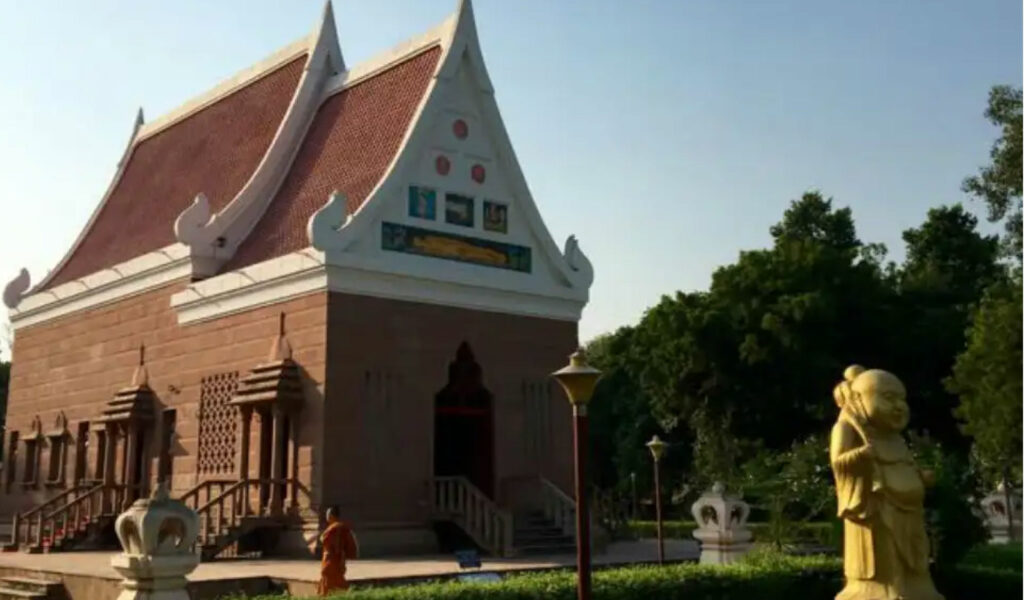
Built by the Thai government, the Thai Temple is a modern Buddhist shrine with a golden statue of Lord Buddha. The architecture resembles traditional Thai style, with sloping roofs and intricate woodwork.
Surrounded by manicured gardens and meditation halls, it offers a peaceful environment for spiritual seekers. It’s less crowded than Dhamek or Chaukhandi Stupa, making it one of the underrated yet beautiful places of visit in Varanasi.
•Timings: 6:00 AM – 6:00 PM.
•Entry Fee: Free.
•Best Time to Visit: Evenings for photography and meditation.
•Travel Tip: Don’t miss the massive reclining Buddha statue inside.
35. Banaras Hindu University (BHU)
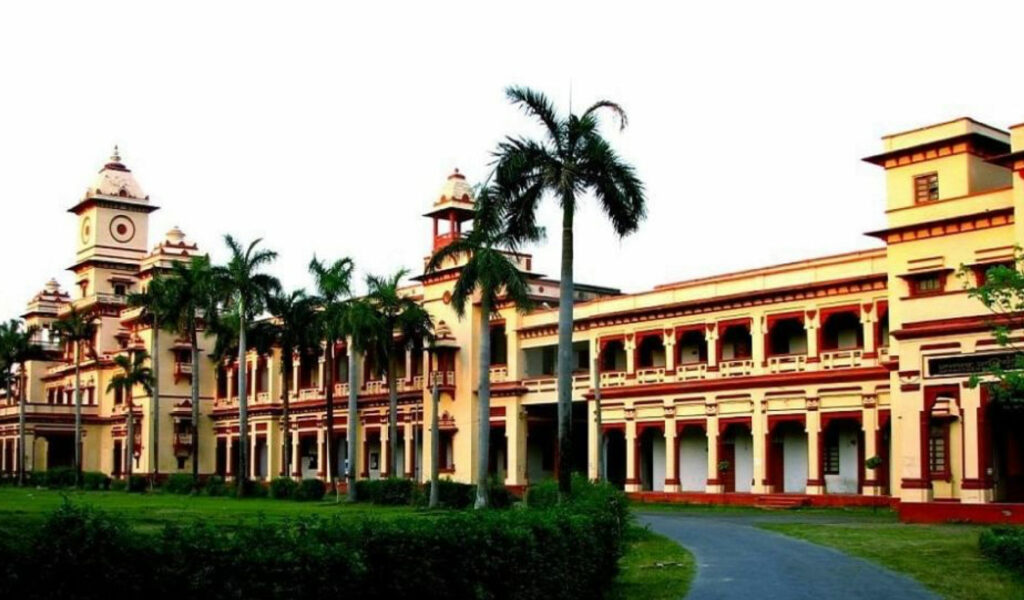
One of Asia’s largest residential universities, Banaras Hindu University is not just an academic hub but also a cultural landmark. Spread across 1,300 acres, it was founded in 1916 by Pandit Madan Mohan Malaviya. The university is home to the New Vishwanath Temple, Bharat Kala Bhavan Museum, and lush gardens, making it one of the most famous places in Varanasi for both students and travelers.
The campus is a serene escape from the crowded ghats. Tourists often visit for its blend of education, culture, and spirituality.
•Timings: 6:00 AM – 8:00 PM (general entry).
•Entry Fee: Free.
•Best Time to Visit: Evening hours, when the campus glows under soft lighting.
•Travel Tip: Rent a cycle or rickshaw to explore the vast campus. A tour guide in Varanasi can take you to hidden academic and cultural spots inside.
36. Ganga Darpan Interpretation Centre
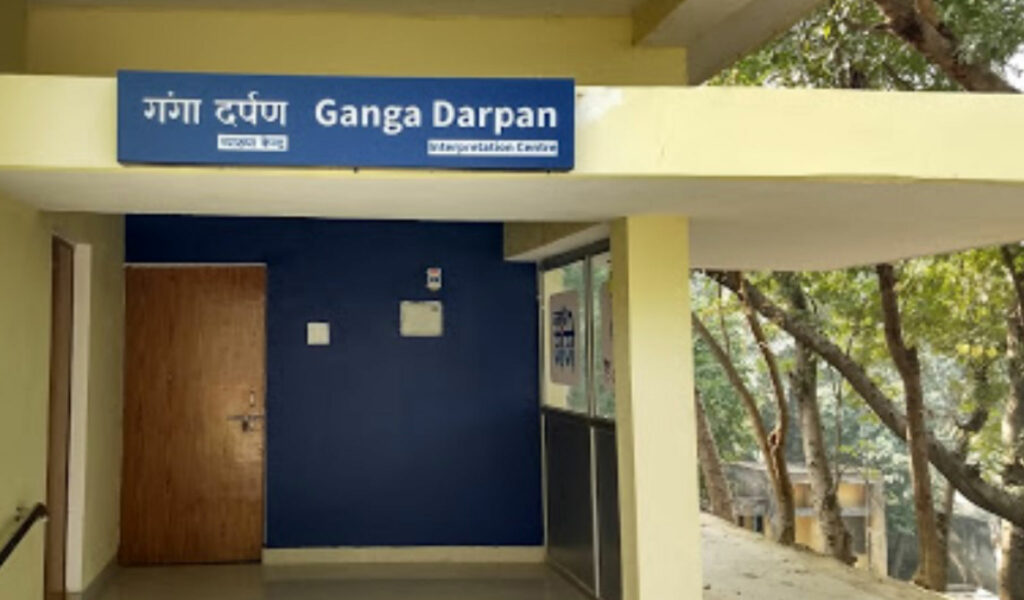
The Ganga Darpan Interpretation Centre is a modern initiative by the government to showcase the history, ecology, and culture of the Ganga River. Using 3D models, interactive screens, and exhibits, it explains the biodiversity and heritage linked to India’s holiest river.
This makes it a unique addition to Varanasi visit places, especially for families, students, and eco-travelers. It’s educational and entertaining, offering a different perspective on Varanasi beyond spirituality.
•Timings: 10:00 AM – 6:00 PM (closed on Mondays).
•Entry Fee: ₹50 (Indians), ₹200 (foreigners).
•Best Time to Visit: Afternoons to avoid school groups.
•Travel Tip: Ideal to combine with a ghat tour for a complete river experience.
37. Weavers’ Village (Sarai Mohana)
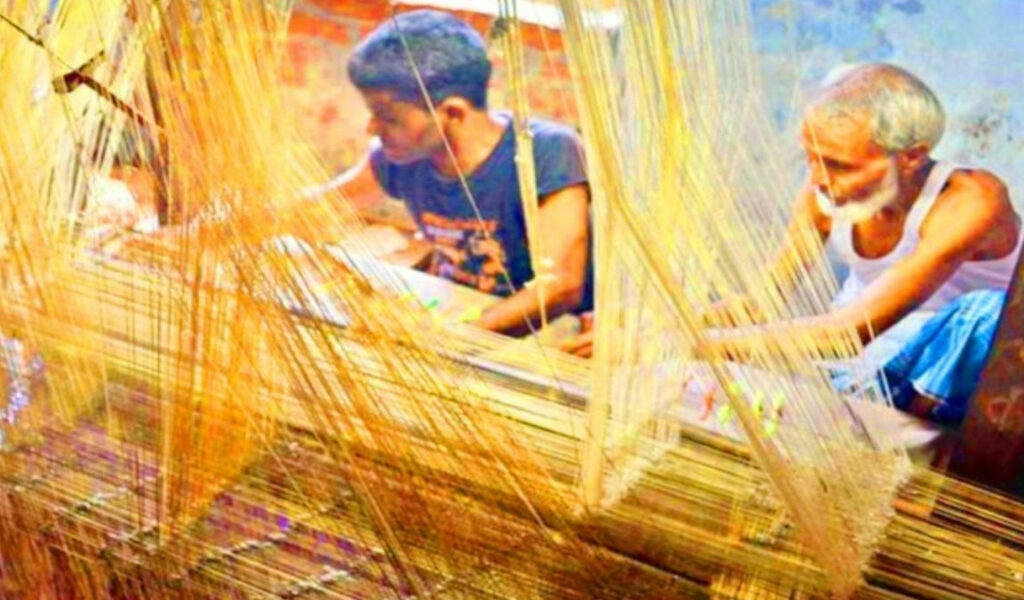
Varanasi is world-famous for its Banarasi silk sarees, and the best place to experience this tradition is Sarai Mohana village, about 8 km from the city. Here, families have been weaving intricate sarees for generations.
Tourists can watch artisans at work on handlooms, learn about the weaving process, and even buy sarees directly from the makers at lower prices than city markets. This cultural experience makes it one of the best places of visit in Varanasi beyond temples and ghats.
•Timings: 9:00 AM – 7:00 PM.
•Entry Fee: Free (charges for workshops or buying sarees).
•Best Time to Visit: Weekdays to see live weaving.
•Travel Tip: Go with a Varanasi tour guide to avoid being overcharged and to meet authentic weavers.
38. Godowlia Market
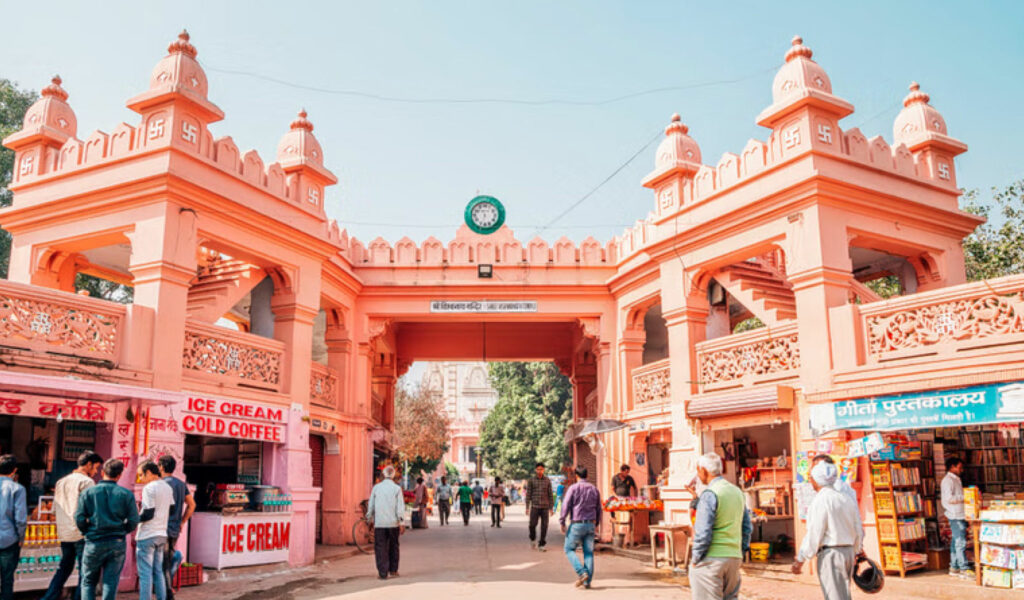
For shopping lovers, Godowlia Market is a bustling paradise. It’s one of the busiest and most famous markets in Varanasi, offering everything from Banarasi sarees and brassware to wooden toys, perfumes, and local snacks.
The narrow lanes are full of color, chaos, and bargains—an authentic slice of Varanasi life. This is one of the famous places in Varanasi for those who love exploring local bazaars.
•Timings: 10:00 AM – 9:00 PM.
•Entry Fee: Free (shopping expenses as per choice).
•Best Time to Visit: Evening for a lively vibe, though mornings are less crowded.
•Travel Tip: Bargain smartly. Hire a tour guide in Varanasi if you want genuine recommendations for shops.
39. Blue Lassi Shop
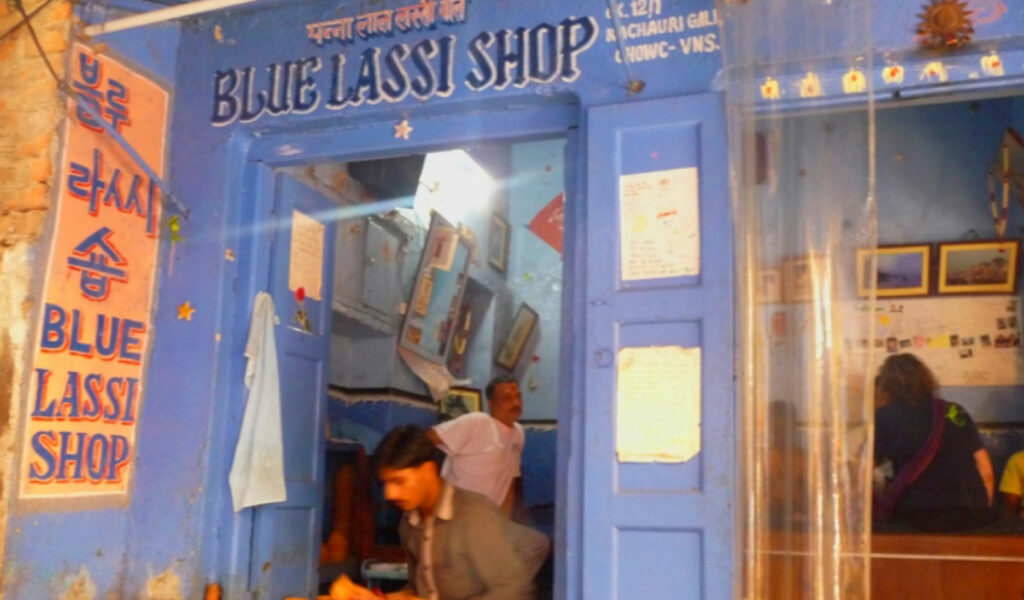
No trip to Varanasi is complete without tasting its legendary lassi, and the Blue Lassi Shop near Manikarnika Ghat is the most iconic spot. Operating for over 75 years, this tiny shop serves more than 80 varieties of lassi topped with fresh fruits and cream.
It has been featured in international travel shows and remains a backpacker favorite. Beyond temples and ghats, this foodie stop counts among the Varanasi visit places you cannot miss.
•Timings: 8:00 AM – 11:00 PM.
•Entry Fee: Free entry; lassi costs ₹50–₹150 depending on variety.
•Best Time to Visit: Afternoons to refresh after sightseeing.
•Travel Tip: Try seasonal fruit lassis like mango or pomegranate.
40. Music & Culture Experience (Ravi Shankar’s House, Music Ashrams)
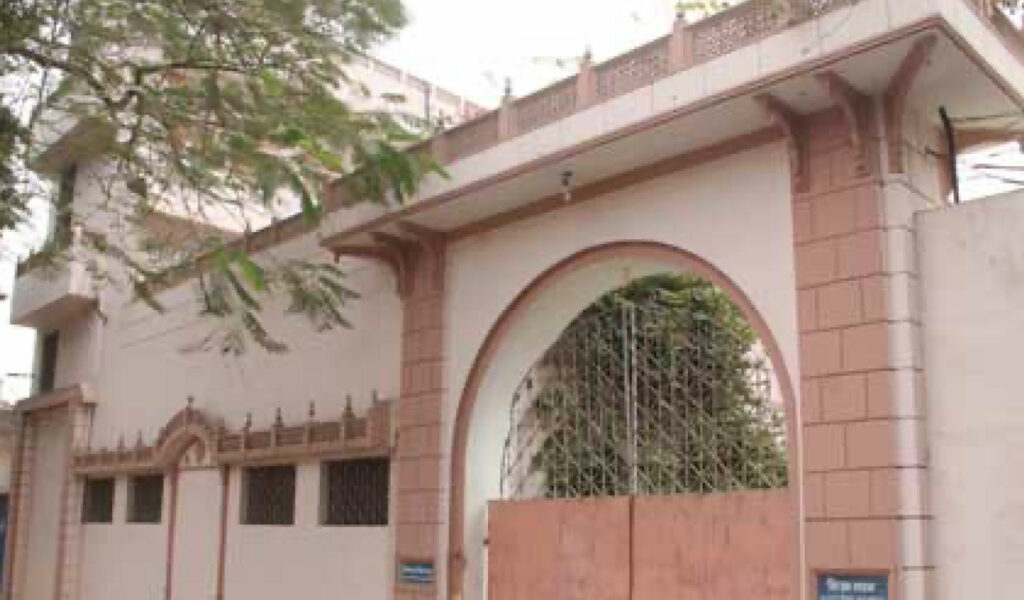
Varanasi is not just about temples but also about music and culture. The city has produced legendary musicians like Pandit Ravi Shankar and Ustad Bismillah Khan. Travelers can visit music ashrams and attend live performances of sitar, tabla, and classical singing.
This cultural richness makes it one of the famous places in Varanasi for art lovers. Many schools near Assi Ghat offer short lessons in Indian classical music.
•Timings: Varies, most performances after 6:00 PM.
•Entry Fee: Depends on event (₹200–₹500).
•Best Time to Visit: During festivals like Mahashivratri or Dev Deepawali.
•Travel Tip: Ask a tour guide in Varanasi to arrange local music evenings or private concerts.
✅ Why Hire a Tour Guide in Varanasi?
Exploring 40 Varanasi visit places can be overwhelming. A local tour guide helps you:
•Avoid scams in crowded ghats/markets.
•Understand temple rituals & history.
•Find authentic street food spots.
•Capture hidden gems not listed in guidebooks.
FAQs on Famous Places in Varanasi
Q1. Which are the most famous places in Varanasi?
Kashi Vishwanath Temple, Dashashwamedh Ghat, Ramnagar Fort, and Sarnath top the list.
Q2. How many ghats are there in Varanasi?
There are around 84 ghats, each with unique significance.
Q3. What is the best time to explore Varanasi?
October to March is ideal for pleasant weather and festivals.
Q4. How many days are enough for Varanasi?
A 3-day trip is perfect for covering temples, ghats, and Sarnath.
Conclusion
From ancient temples and sacred ghats to forts, museums, and Buddhist sites, these 40 places of visit in Varanasi reflect the city’s timeless charm. Whether you’re a pilgrim, history lover, or cultural explorer, Varanasi offers an unforgettable experience.
👉 For first-time travelers, booking a tour guide in Varanasi is highly recommended to unlock the city’s hidden stories.

